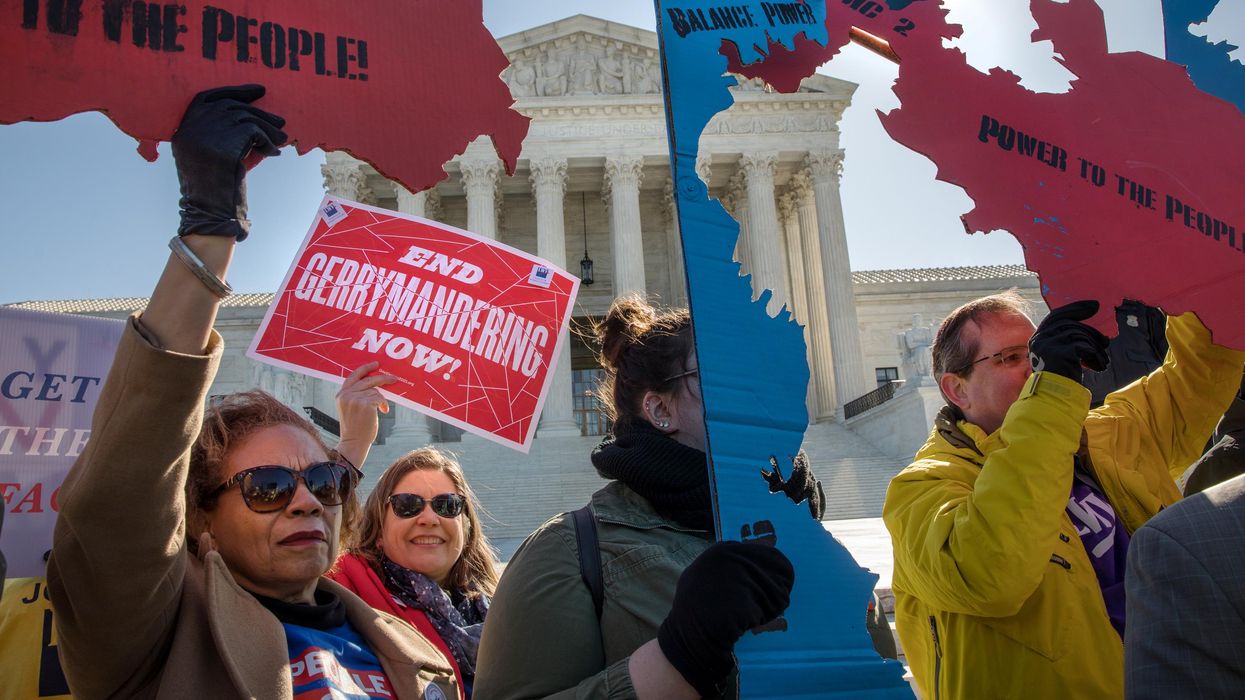This is the second in a two-part series examining how the political landscape has been affected by partisan gerrymandering and changes to voting rights. Read part one.
Gerrymandering remains alive and well in the United States, despite the growth of nonpartisan redistricting commissions and legal efforts to take the politics out of the mapmaking process.
Redistricting is supposed to give equal representation to everyone in a state following the decennial. But by either spreading the opposition party’s voters around (cracking) or concentrating them in few districts (packing), lawmakers have the ability to limit competition and create a scenario in which they “choose their voters ... rather than voters choosing their representatives,” according to the Brennan Center for Justice.
Anti-gerrymandering activists view these maneuvers as an attack on American democracy and they have attempted to end the practice through lawsuits and legislation. But, in most of the country, partisans continue to own the redistricting practice, which goes a long way toward determining who wins elections.
The first significant gerrymandering case to make it to the Supreme Court was Baker v. Carr in 1962, testing whether the federal courts have a say in state legislative redistricting.
For 60 years, Tennessee lawmakers had refused to redraw the legislative districts despite the population growing and shifting. Because the state didn’t redraw the lines, representation was no longer aligned with population by the 1960s. Therefore, the justices ruled that a federal court could hear arguments over whether the state violated the Constitution’s equal protection clause.
A few years later, Congress passed the most influential piece of federal legislation on voting: the Voting Rights Act of 1965, signed into law by President Lyndon B. Johnson. The VRA outlawed racial discrimination in voting and redistricting; banning practices meant to deter Black people from voting, such as literacy tests and poll taxes. It also established a “preclearance” standard, under which states with a history of discrimination must get federal approval before changing any election practices.
The VRA was regularly renewed by bipartisan majorities, until recently, and the Supreme Court struck down the preclearance provision in 2013.
The Supreme Court again considered a case involving the equal protection clause in 1993. Shaw v. Reno stands out in the history of redistricting cases because it set the precedent for judicial review of racial gerrymandering. Plaintiffs in North Carolina argued that the state’s map was drawn to concentrate Black voters into two large districts, limiting their ability to compete across the state. The court ruled that redistricting based on race was unconstitutional.
These legislative and judicial actions sought to protect the right to vote for all Americans — a cornerstone of democracy. Voting ensures that the people elect officials who represent their ideas, interests, and concerns in government; but gerrymandering works to manipulate votes to certify that some individuals’ votes are greater than others.
But the decisions began to shift in the second decade of the 21st century.
The 2013 Supreme Court case Shelby County v. Holder, effectively shut down two sections of the Voting Rights Act, including the preclearance provision, were no longer applicable due to the modernization of elections. Specifically, the constraints identified by Section 4 and Section 5 were “no longer responsive to the current conditions in the voting districts in question.” Justice Clarence Thomas wrote that “the blatant discrimination against certain voters that Section 5 was intended to prohibit is no longer evident.”
Then, in the 2019 case Rucho v. Common Cause, the court removed itself from future cases involving partisan gerrymandering. People in North Carolina had challenged the state’s district map as being Republican-friendly partisan gerrymandering. While lower courts agreed and struck down the map, the Supreme Court disagreed, ruling that partisan gerrymandering claims were beyond the scope of federal courts.
Since then, voting rights activists have turned to Congress for legislative solutions. The For the People Act, a sweeping bill to reform the redistricting process and set national standard for elections, passed the House but was blocked by a Republican filibuster in the Senate. The same fate awaited the John Lewis Voting Rights Advancement Act, which would operate to restore and strengthen the Voting Rights Act of 1965, specifically the sections ruled unconstitutional Shelby County v. Holder. It also addresses discrimination against members of the LGBTQ+ voters. A third bill combining those two, the Freedom to Vote: John R. Lewis Act, was similarly blocked.
As long as gerrymandering continues, activists will develop tools to build awareness and combat its implementation.
For example, Campaign Legal Center has created a database that assesses maps based on four measures: the use of cracking or packing to dilute other people’s votes, partisan bias, the difference between a party’s median vote count and its mean vote count, and declination based on predicted win/loss outcomes.
Another option to deter gerrymandered maps would be to convince states to allow bipartisan or nonpartisan groups — separate from government — to draw the congressional and state legislative maps. Proponents argue this option, often known as “ independent redistricting commissions ” would ensure fair representation of all individuals in accordance with the Voting Rights Act and guarantee politicians would not have any influence on the maps.



















